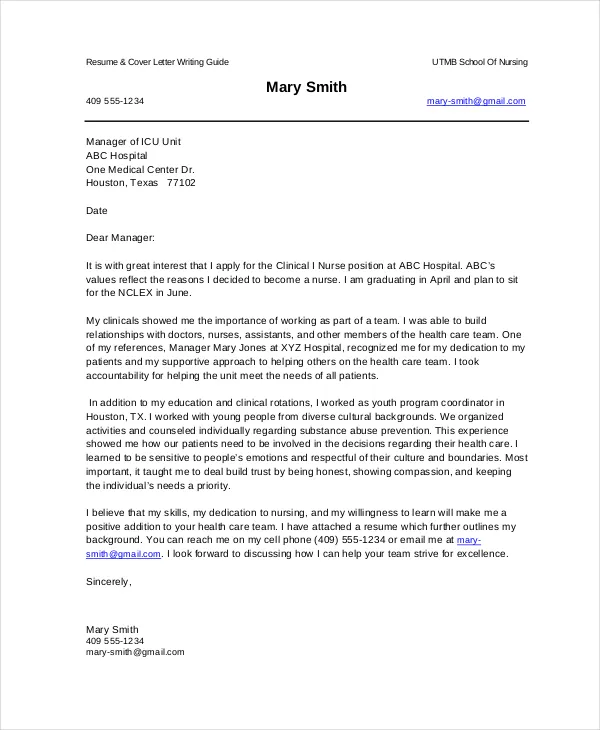Understanding the Importance of a Nursing Cover Letter
A nursing cover letter is more than just a formality; it’s your first opportunity to make a strong impression on a potential employer. In the competitive field of nursing, where numerous qualified candidates vie for the same positions, a well-crafted cover letter can be the deciding factor in securing an interview. It serves as your personal introduction, providing a glimpse into your personality, passion, and professional aspirations. A thoughtfully written cover letter can significantly enhance your chances of landing your dream nursing job, setting you apart from other applicants who may have submitted only a resume. It allows you to showcase your unique qualifications and tailor your application to the specific requirements of each position.
Why a Nursing Cover Letter is Crucial
The importance of a nursing cover letter lies in its ability to provide context to your resume. Your resume presents a list of your skills and experience, but the cover letter allows you to explain how those skills and experiences align with the needs of the hiring organization. It’s your chance to tell your story, to demonstrate your genuine interest in the specific role and the healthcare facility. Cover letters give you space to explain career changes, gaps in employment, or any other factors that might require clarification. In essence, a nursing cover letter helps you personalize your application, making you more than just a list of qualifications.
Highlighting Skills and Experience
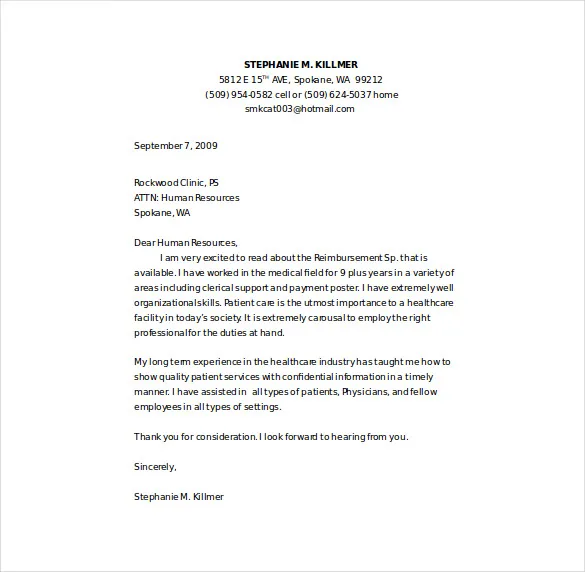
Your cover letter should highlight the skills and experiences most relevant to the nursing position you are applying for. Go beyond simply listing your qualifications; demonstrate how your skills have translated into positive outcomes in previous roles. Use specific examples to illustrate your abilities, such as ‘Successfully managed a team of nurses, resulting in a 15% improvement in patient satisfaction scores.’ or ‘Implemented a new patient education program that reduced readmission rates by 10%.’ This level of detail not only showcases your capabilities but also provides tangible proof of your impact. Tailor each cover letter to match the job description, ensuring you emphasize the skills and experiences that the employer is seeking.
Key Components of a Nursing Cover Letter Template
A well-structured nursing cover letter consists of several key components that work together to create a compelling narrative. Each section serves a specific purpose, contributing to the overall effectiveness of your application. From the opening statement to the closing paragraph, every element should be carefully considered and crafted to present you in the best possible light. Following a standard format helps to maintain a professional appearance and ensures that you include all the necessary information to attract the employer’s attention.
Contact Information
Begin your cover letter with your contact information. This typically includes your full name, phone number, email address, and optionally, your LinkedIn profile URL. Ensure that your email address is professional and that your contact details are up-to-date and accurate. This makes it easy for the hiring manager to reach out to you regarding your application. Place your contact information at the top of the letter, either left-aligned or centered, and make sure to include the date and the recipient’s information below your contact details.
Opening Statement
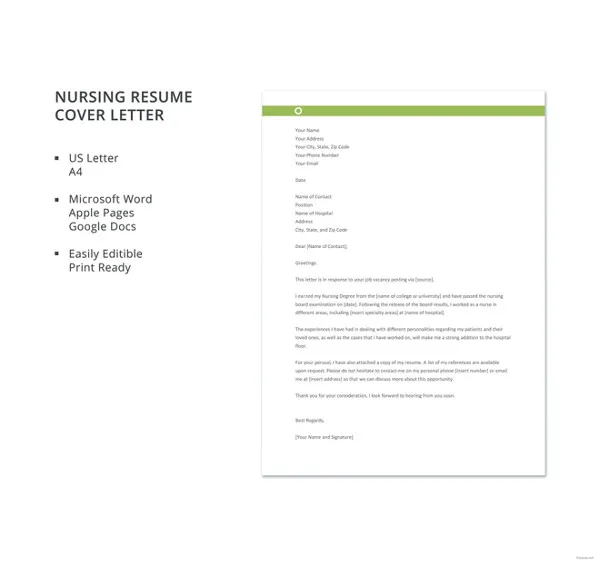
The opening statement is your first opportunity to grab the hiring manager’s attention. Start with a strong, concise sentence that immediately states the position you are applying for and where you saw the advertisement. You might briefly mention your most relevant qualification or a key accomplishment that aligns with the job requirements. Avoid generic openings. Instead, show enthusiasm for the role and the organization. The opening statement should be tailored to the specific job and healthcare facility to demonstrate that you have taken the time to understand their needs.
Body Paragraphs
The body paragraphs are where you elaborate on your skills, experiences, and qualifications. The number of paragraphs will vary depending on the specifics of the job and your background, but typically, you should aim for two to three body paragraphs. Use these paragraphs to provide more detail about your accomplishments and explain how your experiences align with the job description. Show how your skills and experiences can benefit the healthcare facility. Avoid simply restating your resume; instead, provide concrete examples and quantifiable results whenever possible. The goal is to provide a compelling case for why you are the ideal candidate.
Highlighting Relevant Skills
Identify the key skills that the employer is seeking and make sure to highlight them in your cover letter. These can include clinical skills, such as patient assessment, medication administration, or wound care, as well as soft skills like communication, teamwork, and problem-solving. Use action verbs to describe your skills and accomplishments. Tailor your description of skills to match the job description, ensuring that you address the specific requirements and keywords mentioned in the job posting.
Quantifying Achievements
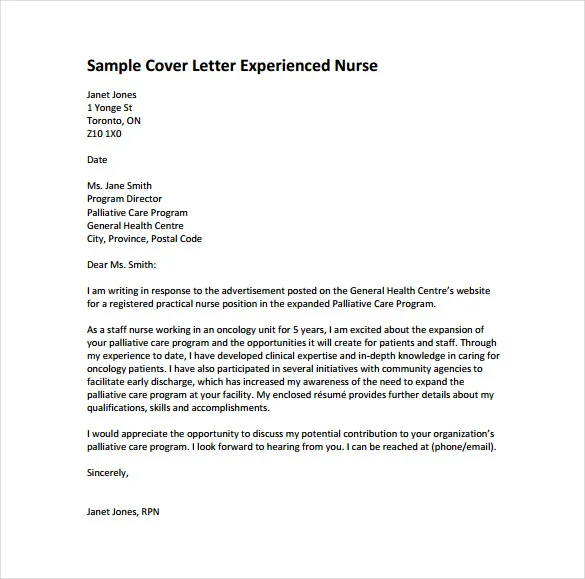
Whenever possible, quantify your achievements to demonstrate the impact of your work. Instead of saying, ‘Improved patient care,’ state, ‘Improved patient care by implementing a new protocol that reduced medication errors by 20%.’ Use numbers and data to support your claims. This makes your accomplishments more credible and shows the employer the tangible results you have achieved in previous roles. Quantifying your achievements makes a stronger impression and helps to differentiate you from other applicants.
Closing
Your closing paragraph should reiterate your interest in the position and the healthcare facility. Thank the hiring manager for their time and consideration. Express your enthusiasm for the opportunity to discuss your qualifications further and reiterate your contact information. Ensure that the tone is professional and shows your eagerness to move forward in the application process. Also, state your availability for an interview and how you can be contacted.
Formatting Your Nursing Cover Letter
The formatting of your nursing cover letter is as important as its content. Proper formatting ensures that your letter is easy to read and conveys a sense of professionalism. The format should be clean, consistent, and visually appealing. Poor formatting can detract from the content and make it difficult for the hiring manager to focus on your qualifications. Pay attention to the choice of font, margins, spacing, and tone to create a polished and professional document.
Choosing the Right Font and Size
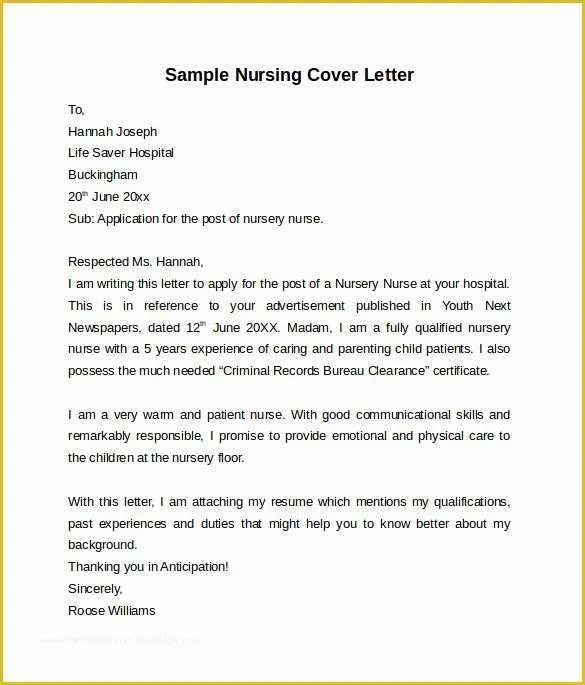
Select a professional, easy-to-read font such as Times New Roman, Arial, or Calibri. Keep the font size between 10 and 12 points. These fonts are standard and widely accepted. Avoid using unusual or overly decorative fonts, as they can be distracting. Ensure consistency in font choice and size throughout the entire cover letter. Proper font selection enhances readability and contributes to the overall professional appearance of your application.
Margins and Spacing Guidelines
Use standard one-inch margins on all sides of your cover letter. This provides enough white space to make the document appear less cluttered. Use single-spacing within paragraphs and double-spacing between paragraphs. This spacing is standard and makes the content easier to read and understand. Consistent margins and spacing create a polished and professional look, making a positive impression on the hiring manager.
Using a Professional Tone
Maintain a professional and respectful tone throughout your cover letter. Use formal language and avoid slang or colloquialisms. Proofread your letter carefully to eliminate any grammatical errors or typos. Address the hiring manager by name if possible, and use a professional salutation, such as ‘Dear Mr./Ms. [Last Name]’. The tone should be confident but not arrogant. Show enthusiasm for the position and the healthcare facility. A professional tone shows that you take your application seriously and that you are a capable communicator.
Free Nursing Cover Letter Template Resources
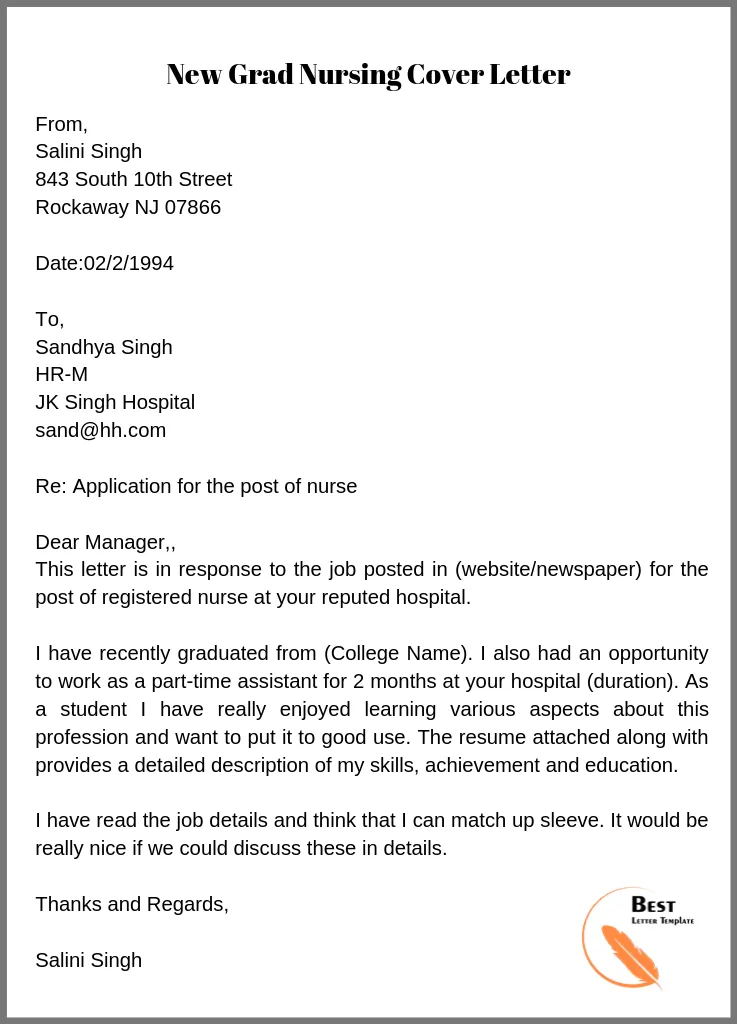
Several resources provide free nursing cover letter templates that you can use as a starting point for your application. These templates are designed to help you structure your letter and ensure that you include all the necessary information. Utilizing these resources can save you time and help you create a professional-looking cover letter quickly. Make sure to customize any template to reflect your unique skills and experiences, and always proofread your letter before submitting it.
Where to Find Free Templates
Many websites offer free cover letter templates specifically for nursing positions. Websites like Resume.io, Indeed, and others offer a variety of templates that you can download and customize. Look for templates that are tailored to nursing roles, and ensure that the format is professional and easy to adapt. Always review the template to confirm that it aligns with your needs and preferences. Consider using a template as a base and then tailoring the template to reflect your unique experience and the specific job requirements.
Customizing Your Template for the Job
Once you have selected a template, the next step is to customize it to match the specific job you are applying for. Carefully review the job description and identify the key skills and experiences that the employer is seeking. Tailor your cover letter to highlight those qualifications. Include relevant keywords from the job description. The aim is to present yourself as the best candidate for the role. Remember to replace the placeholder text with your own information and customize the content to reflect your specific experience and the needs of the position.
Reviewing and Editing Your Cover Letter
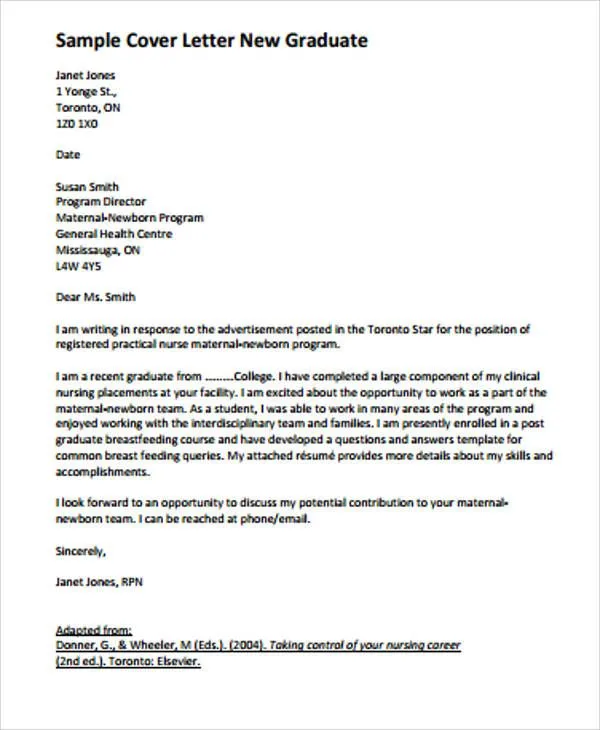
Before submitting your cover letter, it is essential to review and edit it carefully. The goal is to ensure that your cover letter is free of errors, clear, and compelling. Proofreading and getting feedback are critical steps in the process of creating a strong cover letter. Always take the time to thoroughly review your document, looking for any issues that could detract from your application.
Proofreading for Errors
Proofread your cover letter multiple times to catch any grammatical errors, typos, or inconsistencies. Use a spell checker, but also read your letter carefully to catch errors that a spell checker might miss. Pay close attention to the names of the hiring manager and the healthcare facility to ensure they are accurate. It is also helpful to read your cover letter aloud to catch any awkward phrasing or unclear sentences. Thorough proofreading ensures that your cover letter is professional and reflects your attention to detail.
Getting Feedback
Ask a trusted friend, family member, or career counselor to review your cover letter and provide feedback. An outside perspective can help you identify areas where your cover letter could be improved. Ask for feedback on the clarity, content, formatting, and tone of your letter. Incorporate this feedback to refine your cover letter and make it as effective as possible. Feedback from others can help you to catch errors that you might have overlooked, or to identify opportunities to strengthen your presentation.
